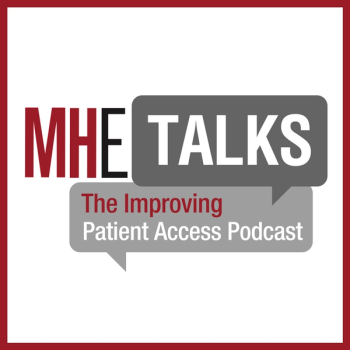
The First Episode of New Podcast, MHE Talks: Improving Patient Access
John Henderson, president and CEO of the Texas Organization of Rural and Community Hospitals, spoke with Senior Editor Peter Wehrwein about COVID-19, telehealth, emergency care, and Medicaid expansion.
They say that everything is bigger in Texas and that applies to the vast, panoramic landscape of the state’s rural areas.
All that geography looms as a barrier to delivering healthcare to the people who live there in, notes John Henderson, president and CEO of the Texas Organization of Rural and Community Hospitals in Austin, Texas.
And so is the fact that Texas is one of the dozen states that haven’t expanded Medicaid expansion, says Henderson.
“We count 27 rural Texas hospital closures in 22 communities — some have actually closed, tried to reopen and close again — since 2010. That's more than double any other state and makes us, frankly, ground zero for the hospital closure process in the country,” says Henderson, the first guest on Managed Healthcare Executive®’s new podcast, MHE Talks: Improving Patient Access.
About 70% of rural hospital closures nationwide have occurred in nonexpansion states, according to Henderson. But because of the federal CARES Act money earmarked for rural hospitals, there haven’t been any rural hospital closures in Texas this year, he says. And Henderson describes the COVID-19 pandemic as having silver linings for his 158 members — and for improving patient access in rural Texas.
“We’ve been kind of reminded of the importance of access to care and bed capacity in the rural areas of Texas,” he notes. And like most other areas of the country, rural Texas has seen the pandemic-fueled adoption of telehealth.
“I think that telepysch for rural communities, in particular, is a game changer,” Henderson says. “Most rural communities don’t need a MD psychiatrist. They need one or two psych consults per day. And so instead of trying to get someone to come to your community, you can do that virtually.”
“Now, there are other medical specialties and services that are more procedural in nature,” Henderson continues. “And I think rural communities still would prefer to have a primary care physician in their clinic, in their community.” After the off-the-charts surge this spring, telehealth usage has settled down some, notes Henderson, who expects telehealth visits to comprise about 10% to 20% of all physician visits in the future.
Connectivity will need to improve for telehealth to live up to its promise of improving patient access in rural Texas, note Henderson: “Most hospitals have fiber, but we're talking about a solution, ultimately, that will be available on most people's smartphone. And that last mile in the really frontier areas of Texas remains unresolved.”
Moreover, as Henderson notes, not all of healthcare is reducible to phone or video chat. He portrays rural hospitals as playing a critical role in the provision of emergency care in rural Texas where people live hundreds of miles away from the emergency department at a suburban or urban hospital. Local intervention to treat a stroke can make a large difference in the outcome for the patient because it can happened sooner at the nearby rural hospital, he says. “The same thing with heart attacks — you can start labs and medical interventions that limit that heart muscle damage and give that patient the best chance. You just can't do that going directly from the scene of an accident or a patient's home.”
Henderson says the November 3 election results showed that Texas is still very much a red state; he does not anticipate state lawmakers expanding Medicaid. But some lawmakers in Austin have made changes, such as Medicaid rate increases for rural hospitals, that have helped some with the problems posed by a large uninsured population.
Still, Henderson says many of his members “limped into the pandemic,” financially speaking.
“At the end of calendar year 2019 there were 72 rural Texas hospitals that have less than 30 days cash on hand. That's a scary situation. And I was frankly worried in April, that we were going to have another half dozen rural hospital closures because they were calling me every day saying we're on the ropes, we're doing furloughs and staffing reductions, just trying to make it through another payroll cycle. Thankfully, there was some targeted federal stimulus funding that happened the first week of May. And it's not that there aren't challenging circumstances before and in the midst of and that will follow the pandemic. But we haven't had any rural Texas hospital closures in 2020.”
Newsletter
Get the latest industry news, event updates, and more from Managed healthcare Executive.

















































